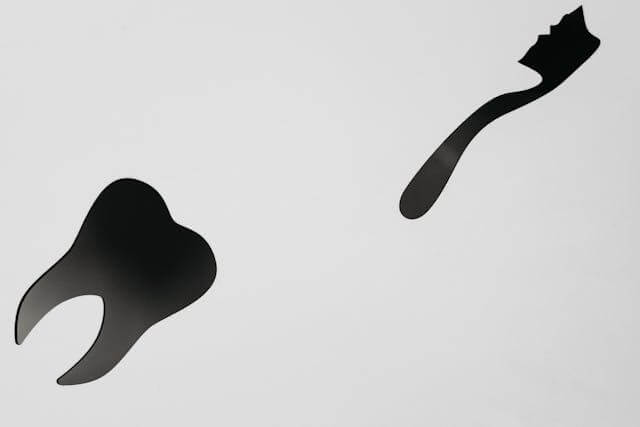Have you ever visited the dentist and they said you have a dead tooth and began to suggest different treatment options? Just like every other living thing, a tooth can also die. If one of your teeth looks darker than the others, with or without occasional swelling and pain, that could be a sign that the tooth is dead.
What is a Dead Tooth?
A dead tooth is a tooth that has lost its blood supply and nerve function.
Inside every healthy tooth is a soft tissue called the pulp. It is the innermost part of the tooth which contains nerves and blood vessels, and is responsible for sensations like hot, cold, pressure, and pain. When the pulp is damaged, blood flow within the tooth is cut off, and the tooth gradually begins to die.
A dead tooth occurs when treatment for an infected or injured tooth is delayed creating room for such an insult to reach the pulp. Overtime, the infection or injury causes the pulp to die. That is what dentists call pulp necrosis.
Causes of a Dead Tooth
A tooth doesn’t die overnight. It usually follows a gradual process. Here are the main causes:
1. Dental Caries
When cavities are left untreated, the decay on the enamel tends to progress into the dentin. If there is no dietary modification and good oral hygiene practice, the infection can spread to the pulp. The infection within the pulp leads to pulp death.
Many Nigerians have the habit of delaying dental treatment even when there is pain. Delay can only complicate the problem. If you notice dental cavities on your teeth, see a dentist as soon as possible. You don’t have to wait until there is unbearable pain before you see a dentist. Doing that can cause further complications and lead to increased treatment cost.
2. Dental Trauma
Dental trauma happens to both adults and children. However, it is common among children, especially the male children. Study shows that more boys than girls suffer from dental trauma before the age of 12. Dental trauma includes broken teeth, injuries to the gum, and iatrogenic injuries during dental procedures.
A sudden impact like a hit to the mouth during sports, a fall, or even biting down on something too hard can fracture the tooth. The fracture can cause dentin or pulp exposure, leading to pulp infection and a pulp necrosis in the long run, especially if no dental treatment is given.
Where a tooth falls out of its socket due to injury, the tooth can be replanted in its original position. If the replantation wasn’t done early enough, that tooth will most likely die despite the treatment.
3. Tooth Wear Lesions
Just like the name suggests, anything whether chemical, physical, or thermal that erodes the tooth substance will cause a tooth wear lesion. These lesions include the following:
- Attrition: occurs due to tooth to tooth contact.
- Abrasion: occurs due to mechanical force from external sources e.g.wear from tooth brushing
- Erosion: occurs due to the action of chemical substances on the enamel.
In a situation where the tooth wear is extensive such as in severe attrition, the pulp may become affected. If endodontic treatment is not done as soon as possible, the tooth might die due to pulpal infection.
4. Gum Diseases
Gum diseases like chronic periodontitis and periodontal abscess can lead to pulpal damage if no treatment is delayed.
In this case the problem which started as a gum infection can spread to the roots of the tooth. Once the infection reaches the roots, there is a chance that it could enter the pulp through the opening at the root tip and cause pulpal damage. As the damage progresses, the tooth will eventually die.
5. Injuries Due to Dental Procedures
Iatrogenic injuries can occur during dental treatments. Such injuries may occur during tooth restoration procedures where a tooth has become over prepared using a rotary instrument. They can also occur during tooth extraction, if such injuries lead to pulp exposure, the tooth might become dead with time even after treatment.
Also, certain dental fillings contain components that are irritant to the pulp. Such irritant components can seep into the pulp, especially if the carious lesion is very close to the pulp chamber. In a situation where such materials have been used to fill large cavities without placing an appropriate barrier first, the chemicals in the filling material may seep into the pulp causing irritation and subsequent tooth death.
Symptoms: How to Identify a Dead Tooth
Sometimes, it is difficult to tell if a tooth is dead, especially when there are no obvious symptoms. However, there are certain signs that suggest that a tooth is either already dead or dying gradually. Here are some of them.
1. Change in Colour
One of the most noticeable signs of a dead tooth is a change in colour. A healthy tooth is usually white or slightly off-white, but a dead tooth may turn yellow, gray, or even black. This happens because the blood supply has been cut off causing the pulp tissue to start to decay.
Unlike surface stains from coffee or smoking, this discolouration comes from inside the tooth and won’t go away with whitening treatments.
2. Pain or Sensitivity
Some people experience intense pain when a tooth is dying, while others feel nothing at all. Sudden sensitivity to hot, cold, or pressure may also be a sign that a tooth is in trouble.
3. Swelling or Abscess
If the infection starts spreading from a dead tooth, it can lead to formation of abscess (a pocket of pus). This may cause swelling in the gums, face, or jaw. In severe cases, the spread of the infection can lead to life threatening situations.
4. Bad Breath and Bad Taste
The development of abscess can cause bad breath. Pus has a terrible odour. So, once it forms in the mouth, the mouth most times will have that bad smell.
Sometimes, the pus may find a discharge point and drips into the mouth making the individual have a bad taste. Pus tastes awful as much as it smells terrible.
Ignoring the above symptoms can lead to serious dental problems. Therefore, it’s important to seek treatment as soon as possible if you suspect you have a dead tooth.
Treatment Options for a Dead Tooth
Once a tooth is dead, the process is irreversible. However, the tooth should be treated to prevent further spread of infection and also to restore function and aesthetics. basically there are two main options once a tooth is dead. It is either you do a root canal therapy or remove the tooth.
Your dentist will examine your tooth to determine the best treatment option for your case. They can do any of the following:
1. Root Canal Therapy
A root canal treatment can be done to save a dead tooth if it is still restorable. During this procedure, the dentist removes the dead pulp, cleans out the inside of the tooth, and seals it to prevent infection. According to the Mayo Clinic , root canal therapy is an effective way to preserve a tooth that otherwise would have been removed.
2. Tooth Extraction
If the dead tooth is unrestorable, an extraction will be preferred among other options. Removing a dead tooth prevents the infection from spreading to surrounding structures. While losing a tooth isn’t ideal, there are tooth replacement options that will restore your smile after an extraction.
3. Cosmetic Restoration
After a root canal or extraction of a dead tooth, cosmetic options like crowns, bridges, or an implant could be used to restore the appearance and function of your teeth.
A crown covers and protects a root treated tooth, while an implant, bridge and removable partial dentures are options for replacing a lost tooth.
4. Tooth Bleaching
After completing a root canal therapy, tooth bleaching is one of the options to consider, especially if dead tooth is discoloured. This bleaching process is called non-vital tooth bleaching, and it is done before placing a crown on the tooth. The bleaching restores the tooth to its original colour.
Prevention Tips
While a dead tooth can’t be reversed, there are however, options you can adopt to prevent it from the outset. Some of the things you can do to prevent tooth problems have been discussed below.
1. Maintain Good Oral Hygiene
Brushing twice a day and flossing regularly will help remove plaque that harbours bacteria that cause decay. Neglecting your oral health can lead to cavities, which, if untreated, may result in pulpal infection and consequently pulp death.
2. Regular Dental Visits
Seeing a dentist every six months can help catch problems early. A simple filling can stop decay before the infection reaches the pulp preventing the need for root canals or extractions. If you have a history of having many cavities both filled and unfilled, Seeing the dentist more frequently will be helpful.
3. Wear Mouthguard
If you play contact sport or grind your teeth at night, a mouthguard can help prevent tooth fracture and tooth wear as the case may be.
Trauma is one of the leading causes of a dead tooth, so protection is key.
4. Avoid Excessive Sugar and Acidic Foods
Sugary and acidic foods weaken enamel, making teeth more vulnerable to decay. Cutting down on carbonated drinks, candies, and acidic drinks like citrus juices can help maintain strong, healthy teeth and reduce the risk of dental related problems.
Taking care of your teeth now can save you from serious dental issues later. A little prevention goes a long way in keeping your smile healthy and avoiding expensive treatments.
Conclusion
A dead tooth is more than just a cosmetic issue, it’s a sign that something is wrong beneath the surface. Ignoring it can lead to infections, pain, and even more serious dental problems. Whether it’s discolouration, sensitivity, or persistent bad breath, these symptoms shouldn’t be overlooked. Seeking treatment early can save your tooth and prevent complications.










Well Explained. Thank you.
Comments are closed.